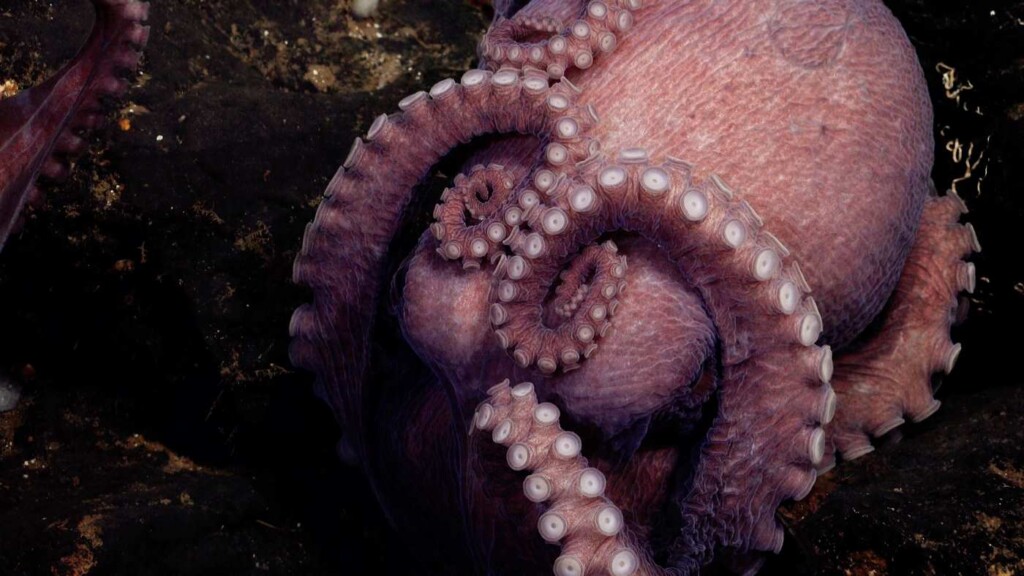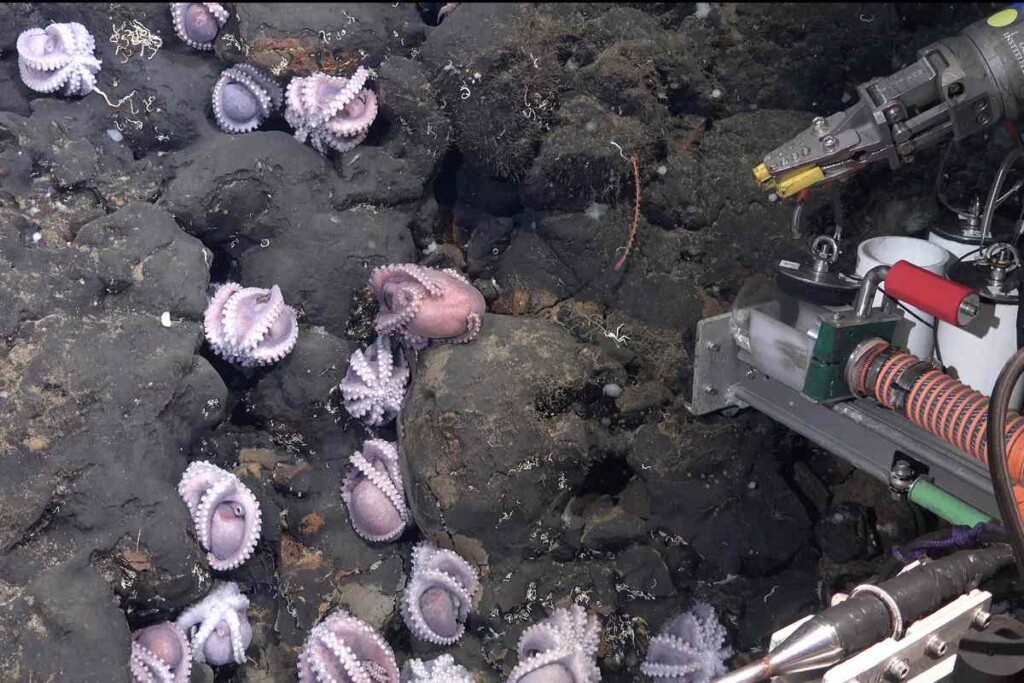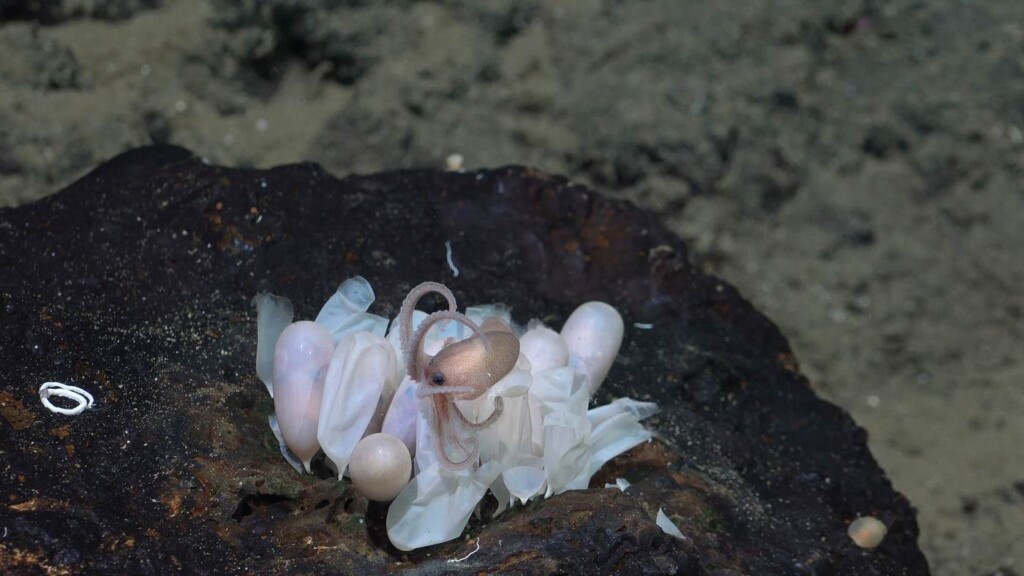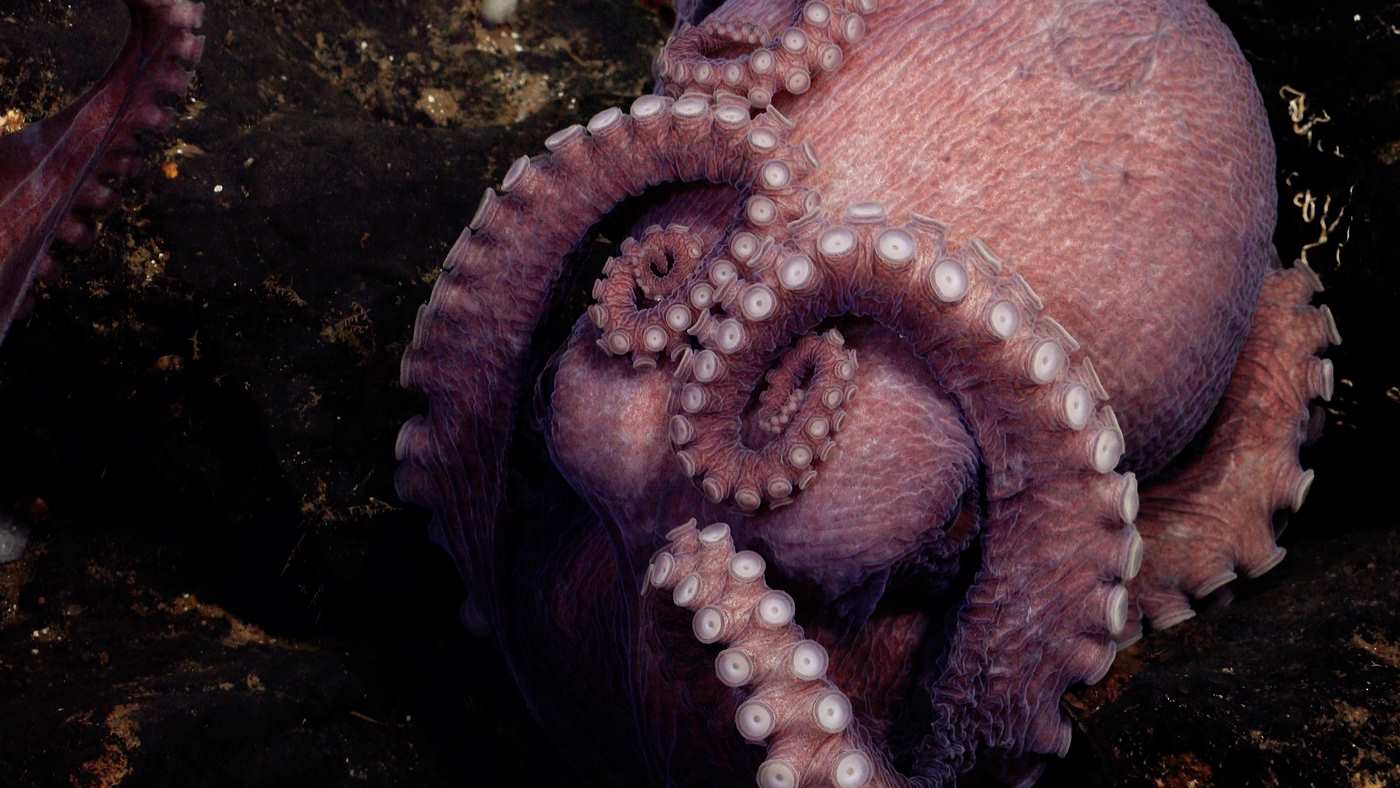
The Schmidt Ocean Institute recently announced a set of absolutely incredible results from one of their expeditions 2 miles below the seas of Costa Rica.
Near a rocky outcrop called El Dorado Hill, the marine scientists identified four new species of octopus photographed a rarely-seen octopus hatchery, and documented their life around a series of hydrothermal vents with video and photographs in a zone where the light doesn’t reach.
The first expedition conducted by the Schmidt Institute took place in June of last year, while the second followed in December, when the team was able to confirm that these nurseries seem to be active year-round.
At the hatchery, the females were photographed incubating their eggs with their suckers pointing out as a defense strategy. According to Smithsonian, it can take years for the eggs to hatch this way, but the water released from the hydrothermal vents warms the area and speeds the process up.
The four species were identified and are currently being described by Dr. Janet Voight, associate curator of invertebrate zoology from the Field Museum of Natural History, and Fiorella Vasquez from the Zoological Museum at the University of Costa Rica. It has already been decided that the brooding species seen in the hatchery will be called the Dorado octopus after the site where it was found.

Three other species were identified in the immediate vicinity, but the Dorado was the only one present at the hatcheries.
“Through hard work, our team discovered new hydrothermal springs offshore Costa Rica and confirmed that they host nurseries of deep-sea octopus and unique biodiversity,” said Dr. Beth Orcutt of the Bigelow Laboratory for Ocean Sciences in a statement.

“It was less than a decade ago that low-temperature hydrothermal venting was confirmed on ancient volcanoes away from mid-ocean ridges. These sites are significantly difficult to find since you cannot detect their signatures in the water column.”
MORE MARINE WONDERLANDS: Scientists Discover Pristine Deep-Sea Coral Reefs in Galápagos Marine Reserve ‘Teeming With Life’
The Dorado octopus seems similar to a species found on the California seamount, while two others had traits that placed them reasonably close to other medium-sized members of the genus Muusoctopus. But a fourth had only a single row of suckers per tentacle, and other traits that make it seem, at least for now, like an anomaly.
The science team also found a thriving deep-sea skate nursery at the top of another seamount in Costa Rican waters, nicknaming the site Skate Park.
YOU MIGHT ALSO LIKE: Scientists Find A Whole New Ecosystem Hiding Beneath Earth’s Seafloor
The team also located three hydrothermal springs in the region, 10 to 30 nautical miles from each other. The springs all have different fluid temperatures and chemistries from one another, indicating unique reaction processes are facilitating their formation.
The captured specimens will not be sent back to the US but instead will be given to institutes in Costa Rica to inspire local deep-sea biologists and conservation in the future.
SHARE This Amazing Deep-Sea Discovery With Your Friends…




















